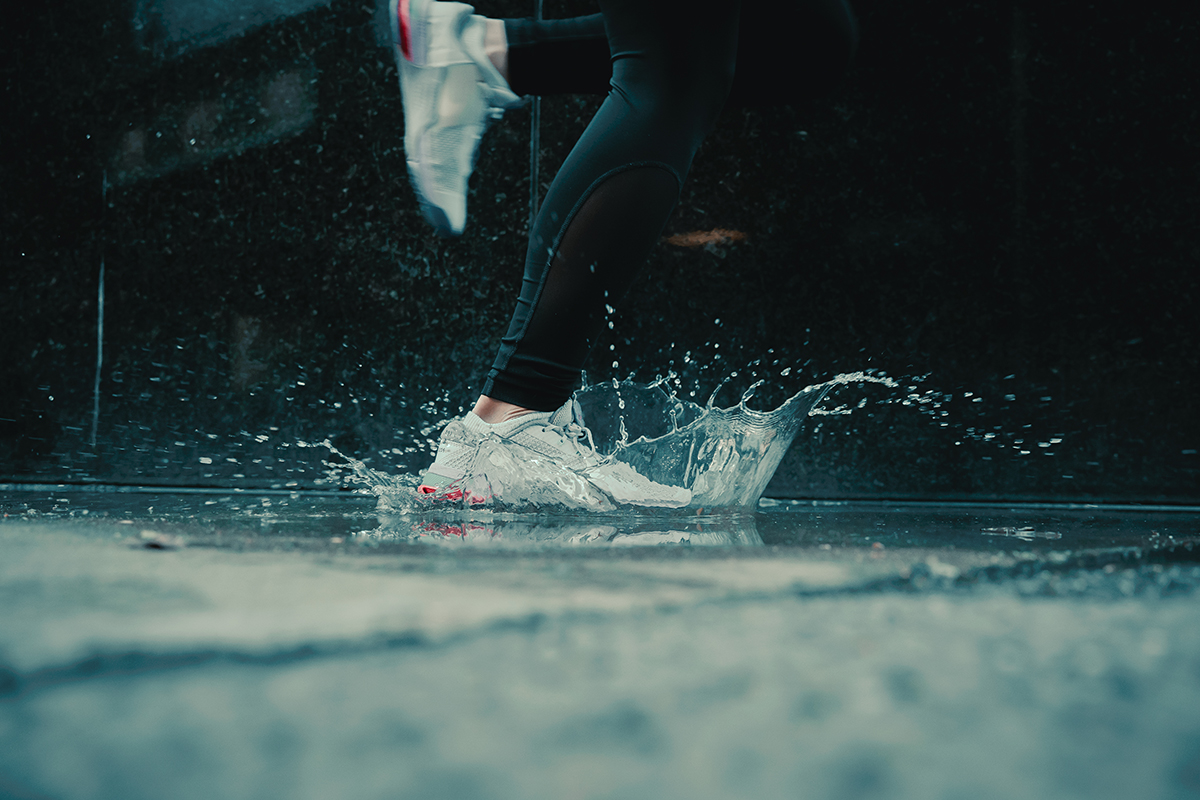Making a Splash
Ian Jones captures drips, dribbles, and drizzles with his Tamron 17-28mm F2.8 and 35-150mm F2-2.8 lenses.
Share the article:
More Photo Tips | Video Gallery | Photo Gallery | Enewsletter sign-up
By Jenn Gidman
Images by Ian Jones
One of Tamron’s last conversations with Pittsburgh photographer Ian Jones was a deep dive into his food images, where he hinted at the subtle action he likes to incorporate. In his latest series of images, Ian goes “full splash,” demonstrating the delicate balance of lighting, timing, and precision needed to shift your images from lifeless to lively.
“I've always gravitated to adding motion to photos,” Ian explains. “I think people are often intimidated at trying to capture something like this, but they’re not difficult to pull off. There’s trial and error involved, but it’s so much fun to play around until you get your desired result—or even some surprises.”
For these photos, Ian tapped into the Tamron 17-28mm F/2.8 Di III RXD ultra-wide-angle and 35-150mm F/2-2.8 Di III VXD all-in-one zoom, both for his Sony mirrorless camera system. “With a Minimum Object Distance (MOD) of 7.5 inches on the wide end, and a maximum magnification ratio of 1:5.2, the 17-28mm F2.8 allows me to capture very sharp photos much closer to my subject, with a wide-angle view,” he says. “The 35-150mm F2-2.8, meanwhile, offers me so much versatility in one lens, and my images come out similarly crisp. Even with the motion shots, I can push the limits, thanks to the lower apertures with these lenses.”
Bright, natural light is key to effectively capturing these types of photos, and Ian typically uses a shutter speed of 1/500 of a second and an ISO of 1000 as a starting point. “I’m still experimenting and learning, and I do get lucky a lot, but I don’t sweat if the photo isn’t technically perfect,” he notes. “I can always do basic cleanup in post-processing and come away with some pretty cool photos.”
Read on to see how Ian captured some of his favorite splash-and-drip shots with his Tamron lenses.
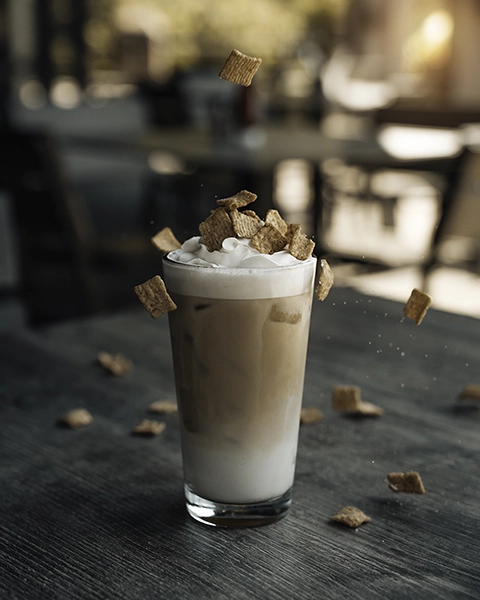
35-150mm (61mm), F4, 1/2000 sec., ISO 800
Click image to view larger
I positioned the beverage here on the table, then locked the manual focus on the cereal pieces perched on top of the whipped cream. My assistant then sprinkled more cereal pieces while I held the shutter button down and took a rapid-fire series of photos. The final composite is made up of eight images.
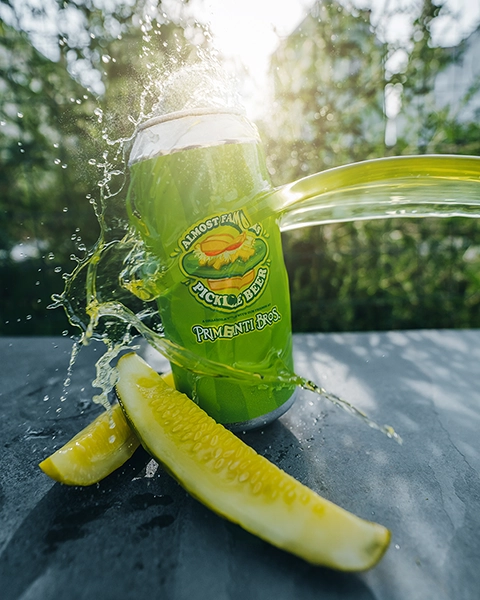
17-28mm (18mm), F3.5, 1/2500 sec., ISO 500
Click image to view larger
I didn’t have an assistant while shooting this can of pickle beer, so I used a tripod. I lined up the shot, then set the camera to focus on the can’s logo. With my left hand, I held the shutter button down; with my right hand, I hurled actual pickle juice at the can.
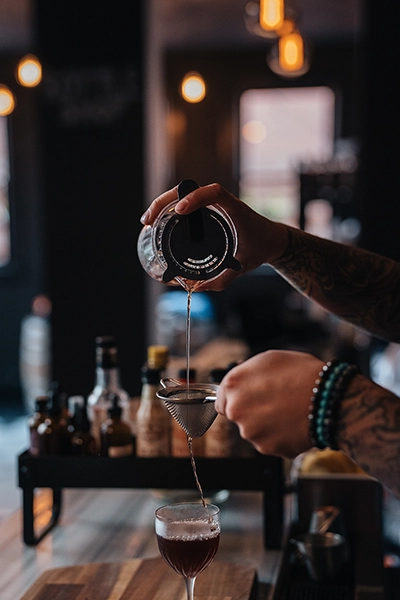
35-150mm (64mm), F2.5, 1/500 sec., ISO 2000
Click image to view larger
I love using lower apertures to keep the concentration solely on the subject, while still showing the environment. The first image here was taken at a high-end cocktail bar, which didn’t have great lighting, so I set up a large studio light to the left of the frame. By shooting at F2.5, I could show off a bit of the bar in the background, but I kept everything center-focused on the stream of liquid flowing into the sieve.
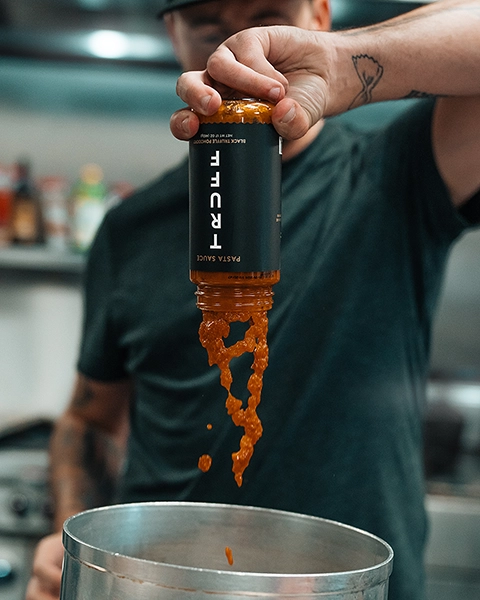
35-150mm (54mm), F2.8, 1/640 sec., ISO 2000
Click image to view larger
Meanwhile, I achieved a similar effect for the photo of the black truffle pasta sauce. That’s my friend Ryan, who’s popular on TikTok, doing the pour. This photo was from when he worked with YouTube star MrBeast last year, where they made a ton of pasta and donated it to a soup kitchen. By shooting at F2.8, the focus remains on the sauce coming out of the jar, but you can still see the kitchen in the background.
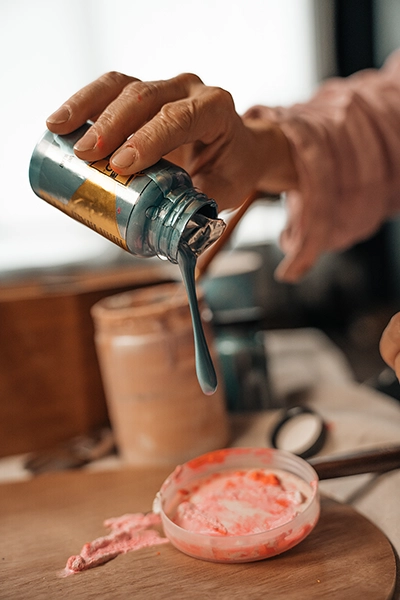
35-150mm (45mm), F2.8, 1/800 sec., ISO 1000
Click image to view larger
This image was for a painter who needed images for her website. She wanted some photos of her engaged in her craft—but like watching paint dry, watching people paint can be a little boring. I came up with the idea to add some motion in the image by having her tilt the paint container so the paint would slowly spill out. The thick paint moved sluggishly, so I didn’t have to use a super-fast shutter speed or high ISO.
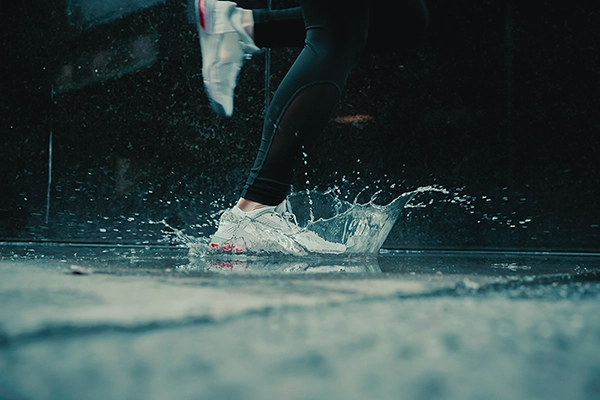
35-150mm (35mm), F3.2, 1/400 sec., ISO 1250
Click image to view larger
It’s OK if you get a little bit of motion blur in these photos now and again. The photo here of the runner splashing through the puddle is one of my favorites. My subject is an athletic influencer, and she wanted pictures for a workout campaign. What’s great about this photo, and the 35-150mm lens, is that I get the blur of her left foot, but the splash itself is so crisp.
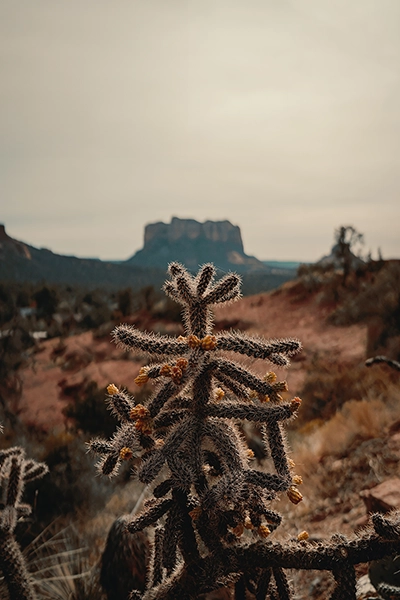
35-150mm (35mm), F3.2, 1/8000 sec., ISO 320
Click image to view larger
I captured this photo of a cactus in Arizona’s Sedona, with the cactus serving as the ideal foreground element against the mountain and rocks in the background. The blooming cactus with its intricate needles and tiny flowers offered the perfect opportunity to show how sharp the 35-150mm lens is, and how it renders those types of details.
To see more of Ian Jones’ work, check out his website and Instagram.
Is your Tamron News subscription up to date? Click to subscribe to all editions of Tamron News featuring how-to tips, new product news, contest announcements and inspiration!
More Photo Tips | Watch Videos | Learn More About Tamron Lenses | Photo Gallery
